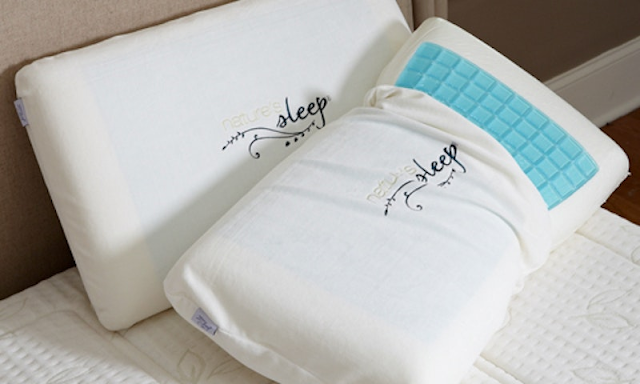Just image what yours has been soaking up over the years
How long has it been since you washed your pillows? Not your pillowcases or protectors, but the pillows themselves? Yeah, the ones with the yellow stains.
We recently discussed how to wash traditional pillows and how frequently (at least every six months) they should be washed, but what about memory foam pillows?
According to cleaning expert Jolie Kerr, you can't just throw memory foam pillows in the washing machine like regular fluff pillows since the movement in both the washer and dryer might cause the foam to split apart. There are, however, different methods for cleaning memory foam pillows. Here’s what to know.
How to wash memory foam pillows
When it comes to cleaning memory foam pillows, you have a few options depending on what you want to achieve.
First, vacuum the pillows
Regardless of whether you plan to proceed to either/both of the processes below, the first step should be to vacuum your memory foam pillow (preferably with the upholstery attachment). This will help get rid of the flakes of dead skin and other types of dust and allergens buried in the foam. The Bedpillows.com crew suggests cleaning your memory foam pillow every time you change your sheets (assuming you change your sheets weekly).
Kerr recommends sprinkling baking soda on the pillow, letting it lie for an hour, and then vacuuming it with the upholstery attachment if it has developed an odor (which makes sense considering the sweat and other secretions you're pouring at night). Deodorizing the pillow can happen on an as-needed basis, or every one to three months, she notes.
However, while vacuuming is useful and necessary, it is not the same as washing the pillow (more on that later).
Remove the stains
If your pillows are stain-free, you can skip this step. For everyone else, get a clean white/off-white cloth and some all-purpose stain remover. Pour a little amount of stain remover onto the cloth (not the cushion), then dab (not rub) the spot. Continue blotting the stain until it disappears, adding more stain remover to your cloth as needed.
After that, thoroughly rinse the cloth, then dab the stain with water again to rinse it. If you're going to stop here, Kerr emphasizes the significance of letting the cushion dry completely before replacing it with a pillowcase.
Clean the pillowcase
When you've finished the preceding steps, it's time to deep clean the memory foam pillow. Here's what you should do:
Fill a bathtub or large basin halfway with lukewarm water and one tablespoon of light detergent. (Remember that more detergent does not guarantee your pillow will be cleaner; it only means you will have to spend more time rinsing it.)
Submerge the pillow, stroking it as you go, and making sure that the whole pillow is wet.
Remove the pillow from the tub and wring off any excess soapy water. Then, return it to the tub, rub it again, and squeeze out the water. Repeat this process a third time.
Drain the tub, then squeeze the soapy water out of the pillow.
Refill the tub with clean water. Repeat the dunking, massaging, squeezing method above until the water runs clean and the pillow is cleaned.
Drain the tub again. To eliminate excess water, press the pillow down into the tub or basin while maintaining it flat.
Remove the pillow from the tub and lay it flat on a clean, dry towel. Then, on top of the pillow, place a second clean, dry towel. Press down to squeeze out more water.
Allow the cushion to air dry, ideally outside in bright sunlight (or indoors under a ceiling fan if that isn't an option). Make sure the pillow is entirely dry before putting on a pillowcase.
How often should a memory foam cushion be washed?
According to Kerr, memory foam pillows are more resistant to dust and other allergens than standard pillows, so they don’t need to be washed quite as often. She suggests doing it every 6 to 12 months.
#MemoryFoam #MemoryFoamPillow #PillowWashing
SOURCE: lifehacker
What do you think of this blog? Write down at the COMMENT section below.


1 comment:
Nice articles and your information valuable and good articles thank for the sharing information Memory Foam Cushions
Post a Comment